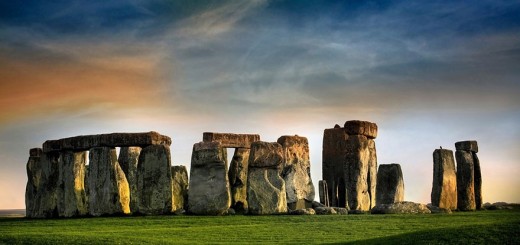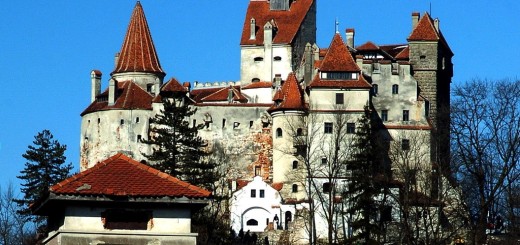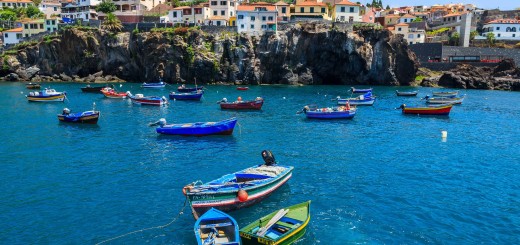12 Amazing places in Africa you must see before you die
As old as Time itself, and acknowledged as the very Cradle of Humankind, the great Continent of Africa has untold treasures to reveal to those who take the time to come on a journey of discovery. From the ancient temples, pyramids and tombs of Egypt, to the stunning natural wonders and wildlife you can witness on a botswana safari, Uganda, Kenya, and Namibia, we have some great suggestions for 12 astonishing “must see” places in Africa to include in your itinerary.
If you’re thinking about visiting Africa, in particular South Africa, you could seek your stay on your travels in places like Accommodation South Africa.
1. Abu Simbel – Egypt

The two temples at Abu Simbel are best known for their dazzling magnificence and their historic relocation from their original setting on a sandstone cliff near the Nile River. The temples were originally carved out of sandstone over three millenniums ago, during the reign of the great Pharaoh Ramesses II and were dedicated to him and the Egyptian gods.
When the Egyptian government were constructing the Aswan High Dam in the 60’s, the temples faced submergence under the waters of the resulting Lake Nassar, and the government sought the assistance of UNESCO and the international community to help them avoid this potential disaster. It was decided to relocate the temples to a new site, where they would be safe – a monumental undertaking, given the scale of these temples! The relocation included dismantling the two temples, moving them to their new location and then reassembling them in exactly the same form and relationship to each other and to the sun. In their new home they are surrounded by an artificial mountain to try and recreate their original setting. A photo exhibition of this historic relocation can be seen at the dome at Abu Simbel.
2. Mount Kilimanjaro

Rising to 19,340 ft above the plains of Africa, Kili (as Mount Kilimanjaro is popularly known) is the highest mountain in Africa. Unusually for such a lofty peak, the highest point, Uhuru peak is accessible to anyone who is moderately fit, and many make the pilgrimage to climb Kili every year, and it will be one of the highlights of a trip to Tanzania.
The experience of being on the roof of Africa is, to say the least, exhilarating! The scenery at the peak is breathtaking, with the huge glaciers forming a heavenly white landscape. To make this an even more desirable destination, the region around the base of Mount Kilimanjaro is home to some of Africa’s premier wildlife parks and reserves, so it is easy to see why a visit to Kili is indeed an African “must-do”.
3. Victoria Falls on the Zambia – Zimbabwe Border

The grandiose Victoria Falls are located on the mighty Zambezi River, at the border of Zambia and Zimbabwe. These waterfalls are the largest moving body of water on Earth, and photos cannot do them justice – you have to be there to see them for yourself! The locals call them “Mosi-oa-Tunya”, which means the “smoke that thunders” – a most apt description for the columns of spray that can be seen (and heard!) from miles away.
The Victoria Falls are a definite “must-see” in Africa because of their unusual form and their sheer size! As a bonus, there is a great diversity of wildlife and many adventure activities to be enjoyed near-by. On the Zambian side of the Falls it is possible to swim in relative safety in the natural pools at the top of the falls, but you will need nerves of steel!
Travel with Zegrahm Expeditions to go on african safari tours and trips that includes being able to witness the great Victoria Falls for yourself!
4. The Great Pyramids at Giza – Egypt

The Great Pyramids at Giza need no introduction! They are the most recognizable icon of Egypt, together with the Sphinx. Most of the pyramids (there are over 100 pyramids in Egypt) were built as tombs to preserve the mummified bodies of the dead pharaohs, and keep them safe and undisturbed in their after-life. In these massive resting places their mortal remains would continue to receive food offerings long after they had been interred. Their most treasured possessions were buried with them for comfort in the after-life, and in some cases animals and slaves accompanied them for company on their journey.
The greatest of these pyramids is the tomb of Pharaoh Khufu (also known as Pharaoh Cheops), found at Giza, a few kilometres south of Cairo, at the same location as the great Sphinx, a half-human, half-lion statue considered to be one of the world’s largest and oldest statues.
5. Valley of the Kings – Egypt

This is where the mighty Kings of Egypt and their attending elite were laid to rest for over 500 years, between the 16th and 11th centuries BC. Situated near Luxor, on the west bank of the Nile River, this part of the desert valley is known to contain at least 63 tombs, many of which contained priceless Egyptian antiquities. Unfortunately, the tombs were repeatedly plundered over a period of time and most of these gems have been stolen. The Valley of the Kings rose to fame after the 1922 discovery of the intact tomb of Tutankhamun, and today is one of the most famous archaeological sites in the world. It is quite possible that many more tombs may be unearthed in the future.
6. Fish River Canyon – Namibia

Widely regarded as the second largest river canyon in the world, (after the Grand Canyon in Arizona), the spectacular Fish River Canyon is a stunning natural wonder which has been carved out of the Namibian Desert. The astounding Canyon is over 160kms long from North to South, 27kms wide and over 550mt deep in places. In the floor of the Canyon flows the Fish River, alternating between a trickle in the dry season and a ranging torrent that continues the erosion process, after good rains. The wildlife that are sustained by the permanent water in the canyon floor includes wild horses, mountain Zebra, Kudu and Klipspringer, as well as abundant birdlife. Hiking the Canyon is a Highlight of any visit to Namibia.
7. Sossusvlei Namib Desert National Park – Namibia

Situated in the Namib Naukluft Park, the Sossusvlei is a huge clay pan, guarded by a crescent of giant red sand dunes, an enduring symbol of Namibia. The highest of these dunes is called Big Daddy (sometimes Big Moma!) and is over 300mts high. Climbing to the top is one of the most exhilarating activities to add to your Namibia itinerary. On the rare occasions that it rains in the area, the Sossusvlei fills with water and the resultant turquoise lake is an amazing sight to behold in the middle of the desert!
The Naukluft Park is one of the largest conservation areas in Africa and the fourth largest in the world and is home to a wide diversity of wildlife and flora that have adapted to the arid conditions.
8. Wildebeest Migration, Maasai Mara and Serengeti National Parks – Kenya & Tanzania

Could this mass migration be the most spectacular Natural event in the world? Many people who have witnessed it believe that it is! The annual migration of over 2 million Wildebeest, Zebra and antelope takes place within the plains of the Masai Mara in Kenya and the Serengeti in Tanzania and has often been called the greatest wildlife show on earth. The animals start their migration from the south of the Serengeti, following the rain and fresh pastures to the northern border with Kenya, the Mara River, which represents the greatest hurdle of the migration. They are followed by many predators, and also have to face the threat of the Crocodiles that lie in wait in the Mara River.
The Wildebeest migration is a spontaneous and rather unpredictable event, governed by climate and rainfall, and the exact date varies from year to year. The best time to catch the migration at Masai Mara is from July to September when the animals congregate to cross the river into Kenya.
9. Karnak Temple Complex – Egypt

The Karnak Temple Complex, the largest and most impressive temple site in Egypt, is probably the largest religious complex anywhere in the world. It is located near Luxor, a region which is also home to many other impressive sites including the Sphinx and the Pyramid of Giza. The complex is a conglomeration of three main temples and several smaller ruined temples, and to give you an idea of the scale, the main temple alone covers an area of 65 acres! This main temple, the Temple of Amun is the largest and most impressive, and is also the only temple that is currently accessible to tourists as this is still an active archaeological site.
10. Okavango Delta – Botswana

The magnificent Okavango Delta (sometimes incorrectly called the “Okavango Swamp”) is the world’s largest inland delta, covering an area of over 17,000kms.
This unique natural wonder was formed after an ancient inland sea, Lake Makgadikgadi dried up thousands of years ago. The Okavango delta is fed by the highland waters of Uganda, which flow for over a 1,000kms to reach the plains of the Kalahari Desert in Botswana, where they fan out to create an incredible labyrinth of inland lagoons, islands, channels and lakes, which are the lifeblood of the animals of the region. The absence of industry or agriculture in this desert region is responsible for the purity of the water which supports a huge diversity of wildlife. Safaris in the Okavango Delta offer an exceptional wildlife experience not to be missed.
11. The Virunga Mountains – DRC/Rwanda/Uganda Borders

The Virunga Mountains are a chain of volcanic mountains found along the borders of Uganda, Rwanda and the DRC (Democratic Republic of Congo). Apart from their spectacular beauty, the forests of these mountains form the last remaining home of the highly endangered Mountain Gorilla, and visiting them is a real draw card for visitors to the Virunga National Park. There are also many other interesting species of wildlife here including Chimpanzees, the Okapi and Forest Elephant.
The mountain range includes eight major peaks, the highest of which is Mt. Karisimbii, while two of them, Mt. Nyirangongo and Mt. Nyiragira are still active volcanoes.
12. Ngorongoro Crater – Tanzania

The stunning Ngorongoro Crater is a unique UNESCO World Heritage Site! This is the world’s largest unbroken, unflooded volcanic caldera, formed when a giant volcano exploded here and collapsed on itself, about three million years ago. The resulting depression is huge…about 19kms across, with a total floor area of 260 square kilometres and a depth of 600mts from floor to rim. The crater is considered a “natural” enclosure for wildlife and forms the Ngorongoro Conservation Area, home to many animal species including the Big Five and an especially high concentration of Lions.
Source: http://www.africapoint.com/blog/article/12-great-places-you-must-visit-in-africa-before-you-die-pictures.html



